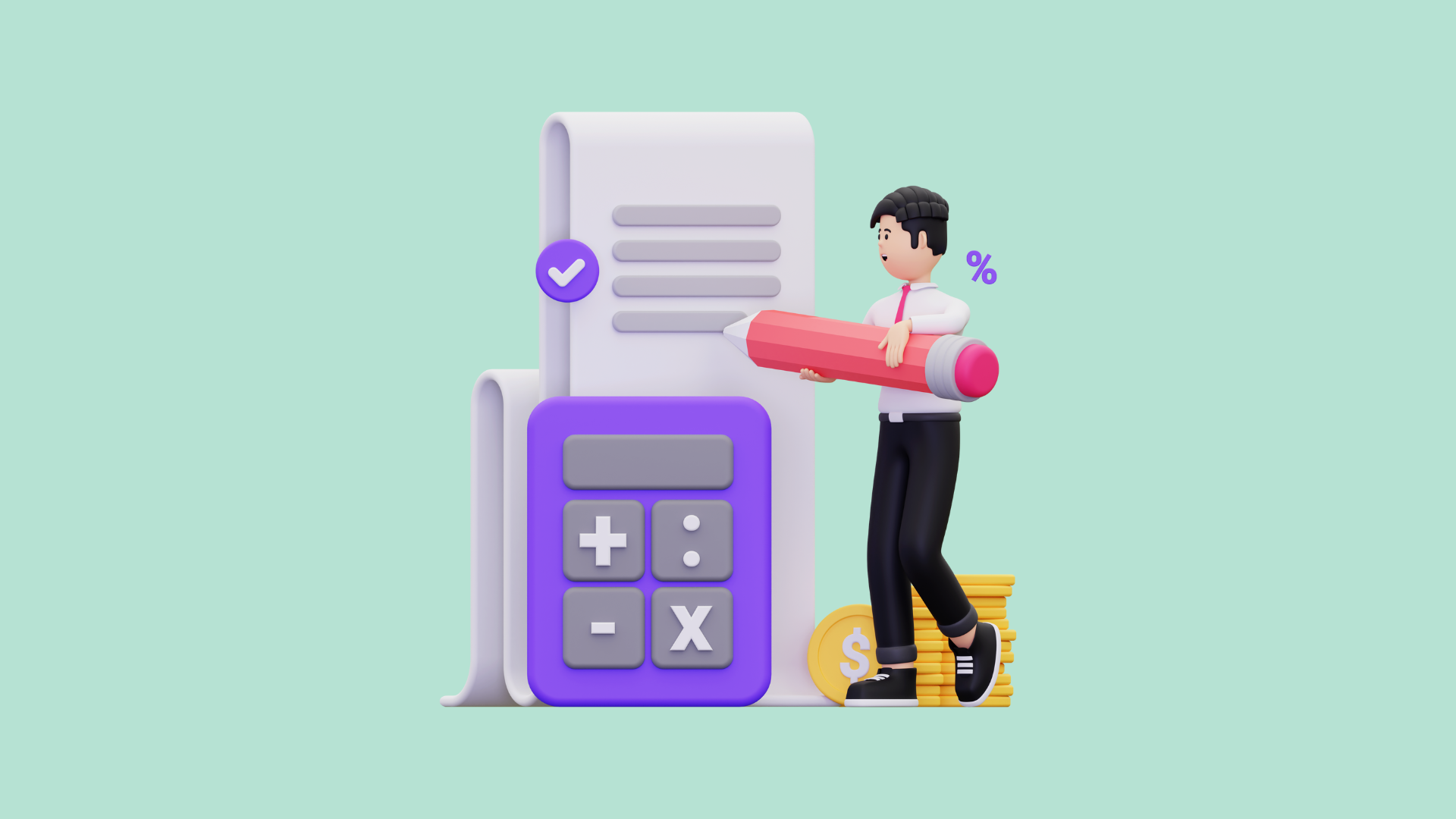Introduction
As we navigate through 2024, the demand for mobile applications continues to escalate, driven by the growing number of smartphone users worldwide and the critical need for digital solutions across all sectors. This surge has put a spotlight on app development, particularly for businesses looking to enhance customer engagement and drive growth. Yet, the journey to creating a high-quality mobile app is fraught with challenges, including the need for specialized expertise, significant time investment, and considerable financial resources.
Given these challenges, app development outsourcing has emerged as a strategic solution for many businesses. This approach not only grants access to a global pool of talent but also offers cost efficiency and flexibility, allowing companies to focus on their core operations while their app development needs are addressed by experts. This guide is designed to provide businesses with insights into the process of outsourcing app development. We'll discuss the critical aspects of choosing between in-house development and outsourcing, delve into the various outsourcing options, and offer strategies for minimizing risks. Our goal is to equip businesses with the knowledge needed to make informed decisions in the rapidly evolving app development landscape of 2024.
Mobile App Development Outsourcing vs. In-House

Deciding between outsourcing mobile app development and managing the process in-house is a pivotal choice for businesses aiming to launch new apps. This section delves into the comparative advantages and challenges of both approaches, offering insights to help businesses align their strategy with their goals, resources, and capabilities.
Case for outsourcing
- Access to global talent: Outsourcing opens doors to a worldwide talent pool, enabling businesses to find specialists with the precise skills needed for their app development project. This global reach is particularly beneficial for niche or advanced technologies, like Flutter, where local expertise may be scarce or more expensive.
- Cost efficiency: Typically, outsourcing is more cost-effective than the in-house development model. It eliminates the overhead costs associated with hiring full-time employees, such as salaries, benefits, and workspace expenses. Companies can budget more effectively by paying only for the services they need, when they need them.
- Flexibility and scalability: Outsourcing provides the flexibility to scale the development team up or down based on project requirements. This agility is crucial for adapting to changing market demands or project scopes without the long-term commitments associated with in-house teams.
- Focus on core business activities: By outsourcing app development, companies can concentrate on their core business functions without being sidetracked by the complexities of the development process. This focus is essential for maintaining competitive advantage and driving business growth.
In-house approach
- Control and collaboration: Having an in-house team means complete control over the development process and direct, ongoing collaboration. This setup can enhance project alignment with business goals and facilitate immediate feedback and adjustments.
- Intellectual property security: Keeping development in-house can offer better protection for intellectual property and sensitive information, as control over data and access remains tightly within the company.
- Building internal expertise: Developing mobile apps in-house allows companies to build and retain a deep pool of expertise. This investment in skill development can pay dividends in innovation and the ability to respond quickly to future needs.
While outsourcing offers access to global expertise, cost savings, and flexibility, in-house development provides control, collaboration, and the opportunity to build internal capabilities. Businesses must weigh these factors carefully to choose the best path forward for their mobile app development initiatives.
Options for Outsourcing App Development
When it comes to outsourcing app development, businesses have a variety of models and partners to choose from. Understanding the options available is crucial for finding the best fit for your project's needs, budget, and timeline. Here’s a closer look at the primary avenues for outsourcing app development:
Freelancers
Freelancers are independent professionals who offer their skills on a project or hourly basis. They are a flexible and often cost-effective option for smaller projects or specific tasks within a larger development process.
Pros:
- Cost-effectiveness: Generally, freelancers have lower rates compared to development agencies, making them a budget-friendly choice.
- Specialized skills: Freelancers often specialize in specific areas, providing high expertise for particular development needs.
- Flexibility: Hiring freelancers offers the flexibility to scale your team up or down quickly as project requirements change.
Cons:
- Project management: Managing a team of freelancers requires more coordination and oversight from the client, which can be time-consuming.
- Flexibility in work termination: Freelancers on platforms like UpWork can unexpectedly quit, causing project delays and forcing clients to quickly seek replacements or adjust plans, leading to additional costs.
- Consistency and reliability: The quality of work and reliability can vary widely among freelancers, necessitating thorough vetting.
- Security risks: Working with freelancers may pose higher risks for intellectual property security and confidentiality.
Development agencies

Development agencies offer comprehensive services, including planning, design, development, testing, and maintenance. They are equipped to handle entire projects from conception to launch.
Pros:
- Full-service offering: Agencies provide an all-in-one solution, ensuring a cohesive and streamlined development process.
- Expertise and resources: With access to a team of professionals, agencies can tackle complex projects and offer insights into best practices.
- Accountability and reliability: Established agencies are generally more reliable, with structured processes for project management and quality assurance.
- Strict agreements: Development agencies mitigate the risk of abrupt service terminations, ensuring greater project stability and reducing unpredictability.
Cons:
- Higher cost for quality: Agencies charge more than freelancers, but their comprehensive services and expertise often lead to better project outcomes.
- Process over flexibility: Agencies have set processes to ensure quality, which can be less flexible than freelancers but ensures project reliability.
- Custom solutions: While agencies offer tailored project solutions, aligning on specific goals may take additional time compared to the quicker start times freelancers might offer.
Outstaffing
Outstaffing is a form of outsourcing where a company hires external staff, usually through an intermediary agency, to work on their projects under the company’s direct management. Unlike traditional outsourcing, where the entire project is handed off, outstaffed personnel are integrated into the client’s team, working alongside the in-house staff but remaining employed by the outstaffing provider.
Pros:
- Control and integration: Clients retain full project control and benefit from having external staff integrated into their team, fostering collaboration.
- Cost efficiency: Offers the flexibility to scale teams up or down as needed, without the overhead of hiring full-time employees.
- Access to global talent: Allows companies to tap into a global talent pool, overcoming local skills shortages.
Cons:
- Management overhead: Requires more direct management and integration effort from the client’s side compared to traditional outsourcing.
- Cultural and communication challenges: Working with teams from different cultures and time zones can introduce communication hurdles.
- Dependency on provider: Success depends on the quality of the intermediary agency and the talent it provides.
Outstaffing can be categorized into three types based on geographical and operational considerations:
1. Offshore: Involves hiring staff in a distant country, usually with a significant time zone difference. It offers the most cost savings but can present the greatest challenge in terms of communication and cultural differences.
2. Onshore: The outstaffed team is located in the same country as the client. This model minimizes cultural and communication barriers but is typically the most expensive.
3. Nearshore: Staff are hired from countries geographically close to the client, offering a balance between cost, communication ease, and cultural alignment.
Selecting the right outsourcing option
Choosing the most appropriate outsourcing model depends on several factors, including:
- Project size and complexity: Large or complex projects might benefit more from an agency's structured approach, while smaller tasks could be suitable for freelancers.
- Budget: Financial constraints can significantly influence whether to opt for local agencies, nearshoring, or offshoring.
- Communication needs: Projects requiring frequent, real-time communication might be better suited to local or nearshore options.
- Quality and expertise requirements: Depending on the specific skills and quality standards needed, certain regions or types of providers might offer a better fit.
A successful outsourcing strategy involves weighing these considerations against your project goals and constraints. It's also vital to conduct thorough research, vet potential partners carefully, and establish clear communication channels and project management practices, regardless of the chosen outsourcing model.
How to Start Outsourcing App Development

Embarking on the journey of outsourcing app development can be a significant step towards achieving your business goals, provided it's approached with thorough planning and strategic foresight. Here's a detailed guide on how to start outsourcing app development effectively:
Define your project goals and requirements
- Clarity is key: Start with a clear understanding of what you want to achieve with your app. Define the core functionalities, user experience goals, and performance metrics.
- Document everything: Create a comprehensive project brief that includes your app’s purpose, target audience, desired features, and any specific technologies or platforms (like Flutter for cross-platform development).
- Set realistic expectations: Establish realistic timelines and budget constraints. Understanding the market rates for app development can help set a budget that aligns with your project's scope and quality expectations.
Research potential outsourcing partners

- Look for expertise in your required field: Identify agencies or freelancers with experience in your industry and the specific technologies you're interested in. For Flutter app development, seek out developers with a proven track record in cross-platform projects.
- Check portfolios and references: Review their past projects and ask for references. This will give you insights into their capability and reliability.
- Evaluate communication and workflow: Effective communication is crucial for successful outsourcing. Ensure your potential partners have robust communication channels and project management tools in place.
Initiate conversations and assess compatibility
- Discuss your project in detail: Present your project brief to potential partners to assess their understanding and enthusiasm for your project.
- Ask about their process: Understand their workflow, from concept to launch, including their approach to design, development, testing, and deployment. This will help you gauge how they handle projects and whether it aligns with your expectations.
- Consider cultural fit: The partner's corporate culture and values should align with yours. A good cultural fit can enhance collaboration and result in a better working relationship.
Finalize the partnership
- Request proposals: Once you have shortlisted potential partners, ask for detailed proposals that include timelines, cost estimates, and the scope of work.
- Negotiate terms: Discuss and finalize terms that cover project milestones, payment schedules, confidentiality agreements, and post-launch support.
- Kick-off meeting: With the contract signed, organize a kick-off meeting with your outsourcing partner to build rapport, clarify expectations, and set the project in motion.
Manage the project actively
- Establish regular check-ins: Set up a schedule for regular updates and checkpoints. This keeps everyone aligned and allows for adjustments as needed.
- Be available and responsive: Ensure that you're available to make timely decisions and provide feedback. Your engagement is crucial for the project's success.
- Use project management tools: Tools like Trello, Asana, or Jira can help track progress, manage tasks, and facilitate communication between all parties involved.
Starting to outsource app development requires careful preparation, from defining your project requirements to selecting the right partner and managing the project actively. Outsourcing can not only save you time and resources but also bring in external expertise to create a high-quality app that meets your business objectives and delights your users.
Strategies to Minimize Risks when Outsourcing App Development
Outsourcing app development comes with its set of challenges and risks, ranging from miscommunication and cultural misalignments to project delays and unexpected cost overruns. However, with the right strategies in place, these risks can be significantly minimized. Here’s how businesses can safeguard their projects and ensure a successful partnership with their outsourcing providers.
Conduct thorough due diligence
- Research potential partners: Beyond examining portfolios and testimonials, delve into the provider's history, their team's expertise, and their financial stability. Online reviews and client references can provide insights into their reliability and the quality of their work.
- Evaluate technical competence: For specialized projects, such as those requiring Flutter expertise, assess the technical competence of potential partners. Look for certifications, case studies, and examples of similar projects they have successfully completed.

Establish clear communication channels
- Define communication protocols: Set clear expectations for communication, including the frequency of updates, preferred channels (e.g., email, Slack, video calls), and the primary point of contact.
- Language and cultural considerations: Acknowledge potential language barriers and cultural differences. Opting for partners in similar time zones or with a strong track record of international projects can ease these challenges.
Secure a detailed contract
- Comprehensive agreements: Ensure the contract with your outsourcing partner is detailed and covers project scope, milestones, timelines, payment terms, confidentiality clauses, and the handling of intellectual property.
- Flexibility and contingency plans: Include provisions for changes in project scope and unforeseen challenges. Establishing a process for addressing issues and making adjustments can prevent disputes and project stalls.
Implement a robust project management framework
- Project management tools: Utilize project management and collaboration tools to maintain oversight, track progress, and facilitate communication between all stakeholders.
- Regular milestones and deliverables: Break the project into smaller milestones and deliverables. This approach allows for ongoing reviews and adjustments, ensuring the project stays on track.
Foster a partnership mindset
- Build relationships: View your outsourcing provider as a strategic partner rather than just a vendor. Establishing a strong working relationship based on trust and mutual respect can enhance collaboration and project success.
- Cultural exchange: Encourage knowledge and cultural exchange sessions between your team and the outsourcing partner. This can improve understanding, align expectations, and foster a more cohesive working environment.
Plan for quality assurance and testing
- Quality control measures: Define quality benchmarks and testing procedures early on. Ensure your outsourcing partner has a robust QA process in place to identify and fix issues throughout the development phase.
- User acceptance testing (UAT): Engage with the app during the UAT phase to ensure it meets your requirements and provides the intended user experience.
Maintain control over critical aspects
- Access to code and documentation: Ensure you have access to all codebases, development environments, and project documentation. This not only provides transparency but also secures your ownership and control over the project.
- Data security and privacy: Discuss and implement stringent data security and privacy measures. Compliance with relevant regulations (e.g., GDPR, CCPA) should be ensured by your outsourcing partner.
Minimizing risks when outsourcing app development requires a proactive and strategic approach, focusing on thorough vetting, clear communication, detailed contracting, and robust project management.
Cost to Outsource App Development

One of the most pressing questions for businesses considering outsourcing their app development is, "How much will it cost?" The answer is nuanced and depends on various factors, including the complexity of the app, the geographical location of the outsourcing partner, the experience level of the developers, and the project's scope and duration. Below, we explore these considerations in more detail to provide a clearer understanding of the cost to outsource app development.
Factors influencing cost
- App complexity: Costs vary based on the app's features, design, and backend needs. Simple apps cost less, while those with advanced features like AI or third-party integrations cost more.
- Geographical location: The cost is influenced by the developer's location due to variations in living costs and market demand. Developers in regions like North America and Western Europe generally charge more than those in Eastern Europe, Asia, or Latin America.
- Developer expertise: The cost is affected by the developers' experience and their proficiency in certain technologies. Higher rates are often charged by those with significant expertise or a proven track record in relevant fields.
- Development time: The duration required to complete the project impacts the cost. Projects with tight deadlines might need more resources, leading to higher costs.
Estimating the cost
While specific costs can vary widely, here is a general framework to help businesses estimate the cost of outsourcing app development:
- Simple apps: Basic apps with minimal custom UI/UX design and simple functionality can range from $5,000 to $15,000.
- Medium complexity apps: Apps with more complex features, such as payment integration or API connections, might cost between $15,000 and $30,000.
- High complexity apps: Advanced applications with high-end features, custom animations, complex databases, or the use of emerging technologies can exceed $30,000+.
Pricing models

Outsourcing partners may offer various pricing models, and understanding these can help in budget planning:
- Fixed price: Best suited for projects with well-defined scopes. This model offers predictability in costs but may be less flexible in accommodating scope changes.
- Time and materials: Offers flexibility for projects where the scope is not fully defined. Costs are based on the actual time and resources used, which can vary.
- Dedicated team: Involves hiring a full-time team for the duration of the project. This model is suitable for long-term projects with evolving requirements.
Getting accurate quotes
To obtain accurate cost estimates:
- Prepare detailed requirements: The more detailed your project documentation, the more accurate the quotes you’ll receive. Include specifications, wireframes, and any other relevant information.
- Request multiple quotes: Obtain quotes from several agencies to compare costs, services, and value propositions. This also gives you leverage in negotiation.
- Understand the scope of services: Ensure you know what is included in the quoted price. Ask about additional costs like maintenance, updates, and post-launch support.
- Consider the total cost of ownership (TCO): Look beyond the initial development cost and consider the TCO, which includes maintenance, updates, marketing, and other operational costs over the app’s lifespan.
Outsourcing app development costs vary widely, hinging on clear project definition and strategic partner selection. Engaging in transparent discussions on budget and project scope with your outsourcing partner is key to a cost-effective and successful app development process.
Conclusion
In conclusion, app development outsourcing in 2024 requires a careful evaluation of your project's needs, budget, and management capacity. Whether you choose freelancers, development agencies, or outstaffing for some reasons, each option presents its unique set of advantages and challenges. We recommend considering the nature of your project, the required skill sets, and your capacity for oversight when deciding on an outsourcing model. By doing so, you can leverage outsourcing to not only accelerate your app development process but also enhance its quality and innovation.
What the Flutter stands as your ideal partner in this journey. Our expertise in Flutter app development, combined with a comprehensive understanding of market demands and technological advancements, positions us uniquely to bring your app ideas to life. With What the Flutter, you're not just outsourcing app development; you're embarking on a collaborative journey towards innovation, quality, and success. Ready to transform your app vision into reality with a partner that aligns with your aspirations and values? Contact us today, and let’s create something remarkable together.











